Indian scientists have played a stellar role in the development of India. In the short span of its post-independence history India has achieved several great scientific achievements. Indian scientists have proved their mettle in the face of international sanctions and have made India one of the scientific powerhouses of the world. Here is a brief profile of famous Indian scientists.
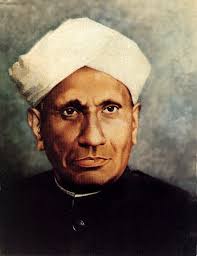
C.V. Raman
C.V. Raman is one of the most renowned scientists produced by India. His full name was Chandrasekhara Venkata Raman. For his pioneering work on scattering of light, C.V. Raman won the Nobel Prize for Physics in 1930.
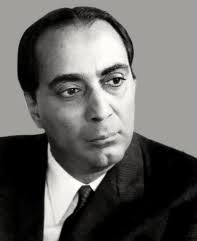
Homi Bhabha
C.V. Raman is one of the most renowned scientists produced by India. His full name was Chandrasekhara Venkata Raman. For his pioneering work on scattering of light, C.V. Raman won the Nobel Prize for Physics in 1930.
Homi Bhabha
Homi Bhabha, whose full name was Homi Jehnagir Bhabha, was a famous Indian atomic scientist. In Independent India, Homi Jehnagir Bhabha, with the support of Jawaharlal Nehru, laid the foundation of a scientific establishment and was responsible for the creation of two premier institutions, Tata Institute of Fundamental Research and Bhabha Atomic Research Centre.
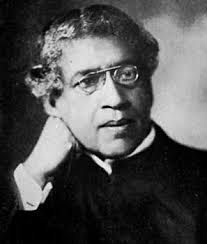
Jagdish Chandra Bose
Jagdish Chandra Bose was born on November 30, 1858 in Mymensingh (now in Bangladesh). His father Bhagabanchandra Bose was a Deputy Magistrate. Jagadish Chandra Bose had his early education in village school in Bengal medium.
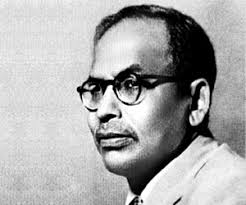
Meghnad Saha
Meghnad Saha was born on October 6, 1893 in Sheoratali, a village in the District of Dacca, now in Bangladesh. He was the fifth child of his parents, Sri Jagannath Saha and Smt. Bhubaneshwari Devi. His father was a grocer in the village. Meghnad Saha had his early schooling in the primary school of the village.

M. Visvesvaraya
Sir M. Visvesvaraya was born on September 15, 1860 in Muddenahalli village in the Kolar district of the erstwhile princely state of Mysore (present day Karnataka). His father Srinivasa Sastry was a Sanskrit scholar and Ayurvedic practitioner. His mother Venkachamma was a religious lady. He lost his father when he was only 15 years old.

Satyendra Nath Bose
Satyendra Nath Bose was an outstanding Indian physicist. He is known for his work in Quantum Physics. He is famous for "Bose-Einstein Theory" and a kind of particle in atom has been named after his name as Boson.

Subrahmanyan Chandrasekhar
Subrahmanyan Chandrasekhar was one of the greatest scientists of the 20th century. He did commendable work in astrophysics, physics and applied mathematics. Chandrasekhar was awarded the Nobel Prize in Physics in 1983.
Jagdish Chandra Bose
Jagdish Chandra Bose was born on November 30, 1858 in Mymensingh (now in Bangladesh). His father Bhagabanchandra Bose was a Deputy Magistrate. Jagadish Chandra Bose had his early education in village school in Bengal medium.
Meghnad Saha
Meghnad Saha was born on October 6, 1893 in Sheoratali, a village in the District of Dacca, now in Bangladesh. He was the fifth child of his parents, Sri Jagannath Saha and Smt. Bhubaneshwari Devi. His father was a grocer in the village. Meghnad Saha had his early schooling in the primary school of the village.
M. Visvesvaraya
Sir M. Visvesvaraya was born on September 15, 1860 in Muddenahalli village in the Kolar district of the erstwhile princely state of Mysore (present day Karnataka). His father Srinivasa Sastry was a Sanskrit scholar and Ayurvedic practitioner. His mother Venkachamma was a religious lady. He lost his father when he was only 15 years old.
Satyendra Nath Bose
Satyendra Nath Bose was an outstanding Indian physicist. He is known for his work in Quantum Physics. He is famous for "Bose-Einstein Theory" and a kind of particle in atom has been named after his name as Boson.
Subrahmanyan Chandrasekhar
Subrahmanyan Chandrasekhar was one of the greatest scientists of the 20th century. He did commendable work in astrophysics, physics and applied mathematics. Chandrasekhar was awarded the Nobel Prize in Physics in 1983.
Vikram Sarabhai was one of the greatest scientists of India. He is considered as the Father of the Indian space program. Apart from being a scientist, he was a rare combination of an innovator, industrialist and visionary.
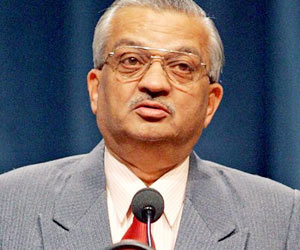
Anil Kakodkar
Dr Anil Kakodkar is a very distinguished nuclear scientist of India. He is presently the chairman of the Atomic Energy Commission of India (AECI) as well as the Secretary to the Government of India, Department of Atomic Energy.

APJ Abdul Kalam
Apart from being a notable scientist and engineer, Dr APJ Abdul Kalam served as the 11th President of India from the period 2002 to 2007. He is a man of vision, who is always full of ideas aimed at the development of the country and is also often also referred to as the Missile Man of India.
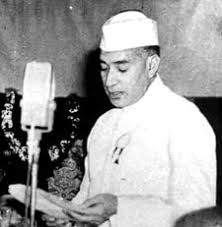
Birbal Sahni
Birbal Sahni was a renowned paleobotanist of India, who studied the fossils of the Indian subcontinent. Also a great geologist, Sahni is credited for establishing the Birbal Sahni Institute of Palaeobotany at Lucknow in the state of Uttar Pradesh. Born on 14 November in the year 1891 at Behra in the Saharanpur District of West Punjab, Birbal was the third son of Ishwar Devi and Prof.
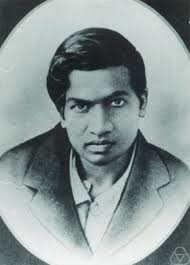
Srinivasa Ramanujan
Srinivasa Ramanujan was a mathematician par excellence. He is widely believed to be the greatest mathematician of the 20th Century. Srinivasa Ramanujan made significant contribution to the analytical theory of numbers and worked on elliptic functions, continued fractions, and infinite series.
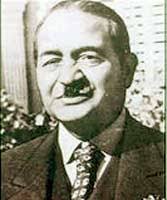
Dr. Shanti Swarup Bhatnagar
Dr Shanti Swaroop Bhatnagar was a distinguished Indian scientist. He was born on 21 February 1894 at Shahpur, which is located in Pakistan in present times. His father passed away sometime after the birth of Shanti Swarup Bhatnagar. As such, he spent his childhood days with his maternal grandfather who was an engineer and it was here that he developed an interest in science and engineering.

Har Gobind Khorana
Har Gobind Khorana is an American molecular biologist born on 9 January 1922 to an Indian Punjabi couple. For his work on the interpretation of the genetic code and its function in protein synthesis, he was awarded the Nobel Prize in the year 1968.

Raja Ramanna
Handpicked by the founder of India's nuclear program, Dr. Homi Bhabha, Dr. Raja Ramanna was a celebrated physicist and nuclear scientist that India had ever produced. A multifaceted personality, Dr. Raja Ramanna played the roles of a technologist, nuclear physicist, administrator, leader, musician, Sanskrit literature scholar, and philosophy researcher.

Ganapathi Thanikaimoni
Ganapathi Thanikaimoni, a successful botanist of his days, is remembered till date for his widespread contribution in the field of palynology. His researches and projects not only helped India to make its presence felt on the world stage of botany, it also furthered public relations between two countries.
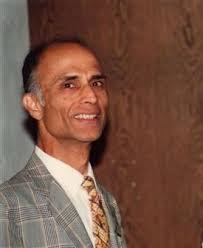
Harish-Chandra
For those who quiver at the thought of calculations and numerical deductions, unless when counting money, mathematics can be the equivalent of hell on earth. And for such 'math atheists' a mathematician like Harish Chandra can very well seem like a mirage. Harish Chandra is one amongst those few people who often
G. N. Ramachandran
Gopalasamudram Narayana Iyer Ramachandran, popularly referred to as G. N. Ramachandran surely must be included in the list of one of the best scientists that 20th century India had produced. The best known work of G. N. Ramachandran till date is the Ramachandran plot, which the scientist had conceived along with Viswanathan Sasisekharan, to understand the structure of peptides.
Prasanta Chandra Mahalanobis
Economic census, population census, agricultural surveys and various other large scale and in depth samples and surveys that have been admired the world over for their scope and accuracy owes its popularity and worldwide acceptance to the grit, determination and genius of one man, Prasanta Chandra Mahalanobis.
Kotcherlakota Rangadhama Rao
Kotcherlakota Rangadhama Rao was one of the greatest physicists of 20th century India. His work in spectroscopy led to the development of the Nuclear Quadrupole Resonance in Physics. Kotcherlakota Rangadhama Rao is also known for his long association with the Andhra University in which he served as professor of Physics and subsequently,
Salim Ali
Almost every one of us is interested in watching colorful and distinct birds crossing us. But very few are passionate about studying them in detail. One such man who took extreme interest and excitement in studying birds closely and categorizing them was Dr. Salim Ali. One of the greatest biologists of all times,
Yellapragada Subbarao
"You've probably never heard of Dr. Yellapragada Subba Rao, yet because he lived you may be well and alive today; because he lived you may live longer". A famous adage quoted by American author, Doron K. Antrim, Yellapragada Subbarao was one of those rare people who made several significant contributions,
Sam Pitroda
Satyanarayan Gangaram Pitroda is a famous Indian and a renowned inventor, entrepreneur and policymaker who currently serves as an advisor to the Prime Minister of India, Mr. Manmohan Singh. His work revolves around Public Information Infrastructure & Innovations. He is respected for being a technological intellect
Venkataraman Ramakrishnan
Indian born American, Venkataraman Ramakrishnan is a senior scientist in the Structural Division at the Medical Research Council Laboratory of Molecular Biology, in Cambridge, England. This great scholar has worked in various fields of biology during the earlier part of his career. However, Venkat along with Thomas A.

Anil Kakodkar
Dr Anil Kakodkar is a very distinguished nuclear scientist of India. He is presently the chairman of the Atomic Energy Commission of India (AECI) as well as the Secretary to the Government of India, Department of Atomic Energy.
APJ Abdul Kalam
Apart from being a notable scientist and engineer, Dr APJ Abdul Kalam served as the 11th President of India from the period 2002 to 2007. He is a man of vision, who is always full of ideas aimed at the development of the country and is also often also referred to as the Missile Man of India.
Birbal Sahni
Birbal Sahni was a renowned paleobotanist of India, who studied the fossils of the Indian subcontinent. Also a great geologist, Sahni is credited for establishing the Birbal Sahni Institute of Palaeobotany at Lucknow in the state of Uttar Pradesh. Born on 14 November in the year 1891 at Behra in the Saharanpur District of West Punjab, Birbal was the third son of Ishwar Devi and Prof.
Srinivasa Ramanujan
Srinivasa Ramanujan was a mathematician par excellence. He is widely believed to be the greatest mathematician of the 20th Century. Srinivasa Ramanujan made significant contribution to the analytical theory of numbers and worked on elliptic functions, continued fractions, and infinite series.
Dr. Shanti Swarup Bhatnagar
Dr Shanti Swaroop Bhatnagar was a distinguished Indian scientist. He was born on 21 February 1894 at Shahpur, which is located in Pakistan in present times. His father passed away sometime after the birth of Shanti Swarup Bhatnagar. As such, he spent his childhood days with his maternal grandfather who was an engineer and it was here that he developed an interest in science and engineering.
Har Gobind Khorana
Har Gobind Khorana is an American molecular biologist born on 9 January 1922 to an Indian Punjabi couple. For his work on the interpretation of the genetic code and its function in protein synthesis, he was awarded the Nobel Prize in the year 1968.
Raja Ramanna
Handpicked by the founder of India's nuclear program, Dr. Homi Bhabha, Dr. Raja Ramanna was a celebrated physicist and nuclear scientist that India had ever produced. A multifaceted personality, Dr. Raja Ramanna played the roles of a technologist, nuclear physicist, administrator, leader, musician, Sanskrit literature scholar, and philosophy researcher.
Ganapathi Thanikaimoni
Ganapathi Thanikaimoni, a successful botanist of his days, is remembered till date for his widespread contribution in the field of palynology. His researches and projects not only helped India to make its presence felt on the world stage of botany, it also furthered public relations between two countries.
Harish-Chandra
For those who quiver at the thought of calculations and numerical deductions, unless when counting money, mathematics can be the equivalent of hell on earth. And for such 'math atheists' a mathematician like Harish Chandra can very well seem like a mirage. Harish Chandra is one amongst those few people who often
G. N. Ramachandran
Gopalasamudram Narayana Iyer Ramachandran, popularly referred to as G. N. Ramachandran surely must be included in the list of one of the best scientists that 20th century India had produced. The best known work of G. N. Ramachandran till date is the Ramachandran plot, which the scientist had conceived along with Viswanathan Sasisekharan, to understand the structure of peptides.
Prasanta Chandra Mahalanobis
Economic census, population census, agricultural surveys and various other large scale and in depth samples and surveys that have been admired the world over for their scope and accuracy owes its popularity and worldwide acceptance to the grit, determination and genius of one man, Prasanta Chandra Mahalanobis.
Kotcherlakota Rangadhama Rao
Kotcherlakota Rangadhama Rao was one of the greatest physicists of 20th century India. His work in spectroscopy led to the development of the Nuclear Quadrupole Resonance in Physics. Kotcherlakota Rangadhama Rao is also known for his long association with the Andhra University in which he served as professor of Physics and subsequently,
Salim Ali
Almost every one of us is interested in watching colorful and distinct birds crossing us. But very few are passionate about studying them in detail. One such man who took extreme interest and excitement in studying birds closely and categorizing them was Dr. Salim Ali. One of the greatest biologists of all times,
Yellapragada Subbarao
"You've probably never heard of Dr. Yellapragada Subba Rao, yet because he lived you may be well and alive today; because he lived you may live longer". A famous adage quoted by American author, Doron K. Antrim, Yellapragada Subbarao was one of those rare people who made several significant contributions,
Sam Pitroda
Satyanarayan Gangaram Pitroda is a famous Indian and a renowned inventor, entrepreneur and policymaker who currently serves as an advisor to the Prime Minister of India, Mr. Manmohan Singh. His work revolves around Public Information Infrastructure & Innovations. He is respected for being a technological intellect
Venkataraman Ramakrishnan
Indian born American, Venkataraman Ramakrishnan is a senior scientist in the Structural Division at the Medical Research Council Laboratory of Molecular Biology, in Cambridge, England. This great scholar has worked in various fields of biology during the earlier part of his career. However, Venkat along with Thomas A.
